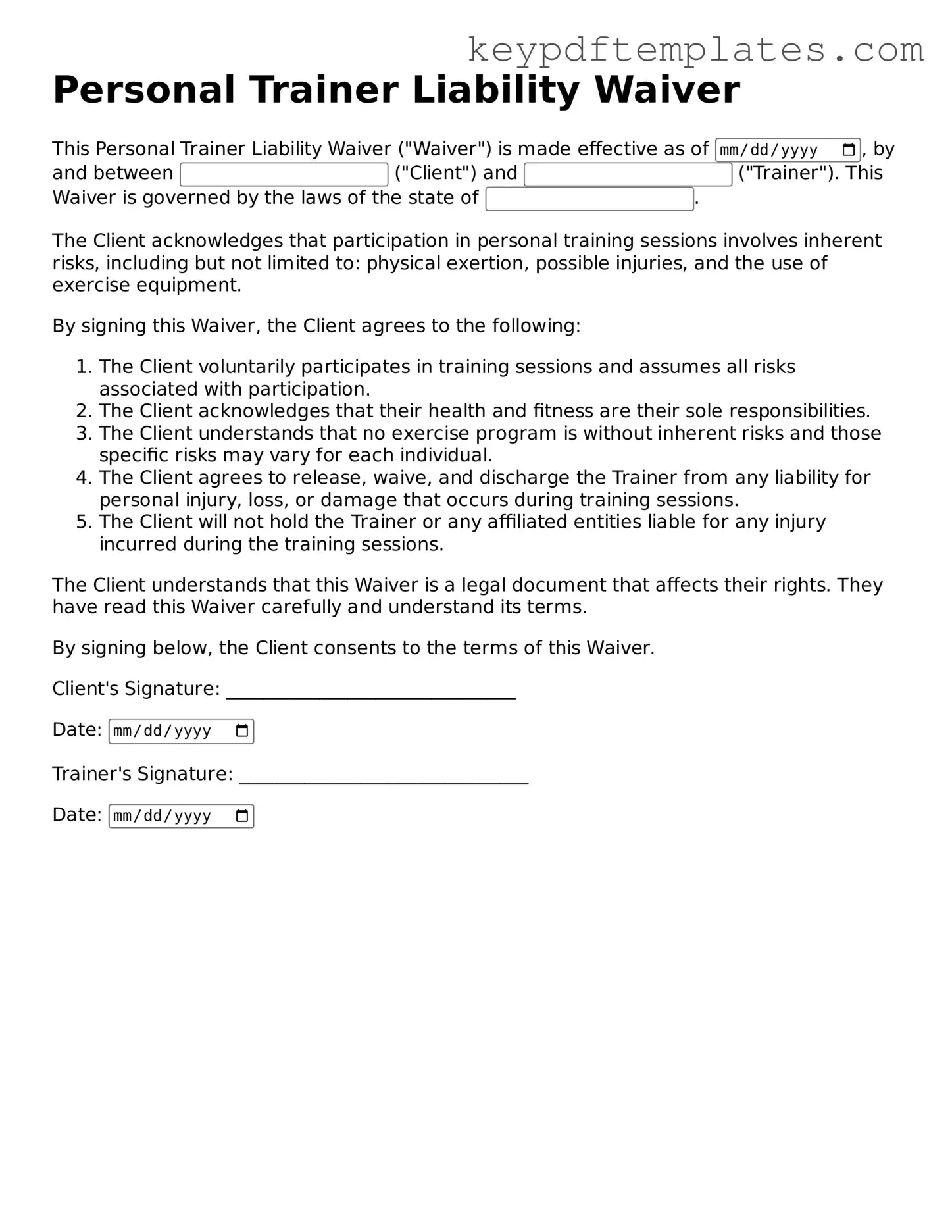Printable Personal Trainer Liability Waiver Template
The Personal Trainer Liability Waiver form is a legal document that protects personal trainers from liability for injuries or accidents that may occur during training sessions. By signing this form, clients acknowledge the risks involved in physical activities and agree not to hold the trainer responsible for any potential harm. Understanding this waiver is essential for both trainers and clients to ensure a clear agreement regarding safety and responsibility.
Modify Document Online
